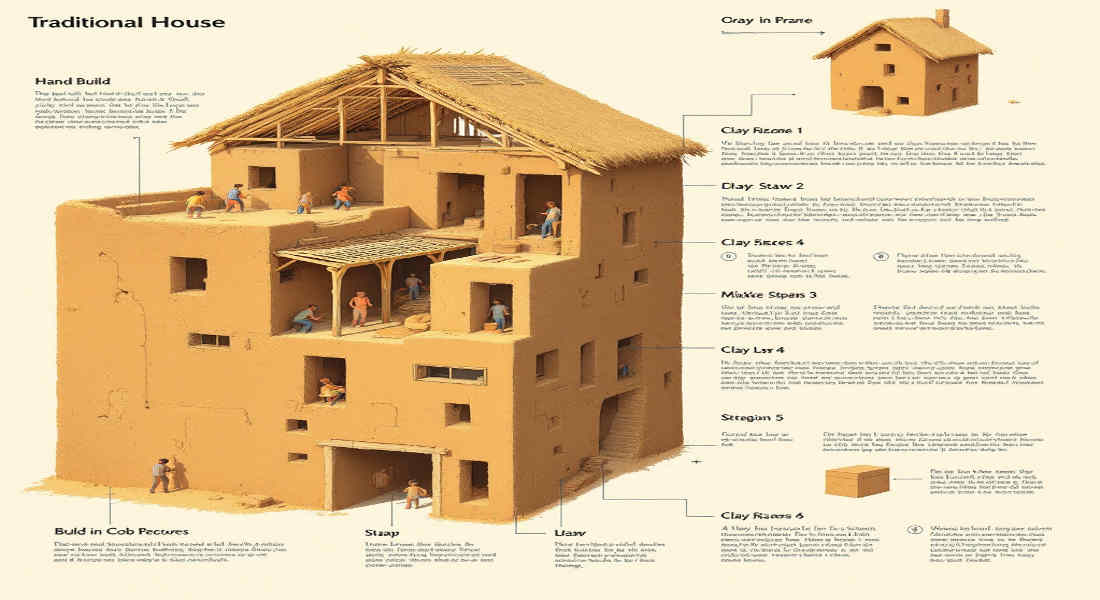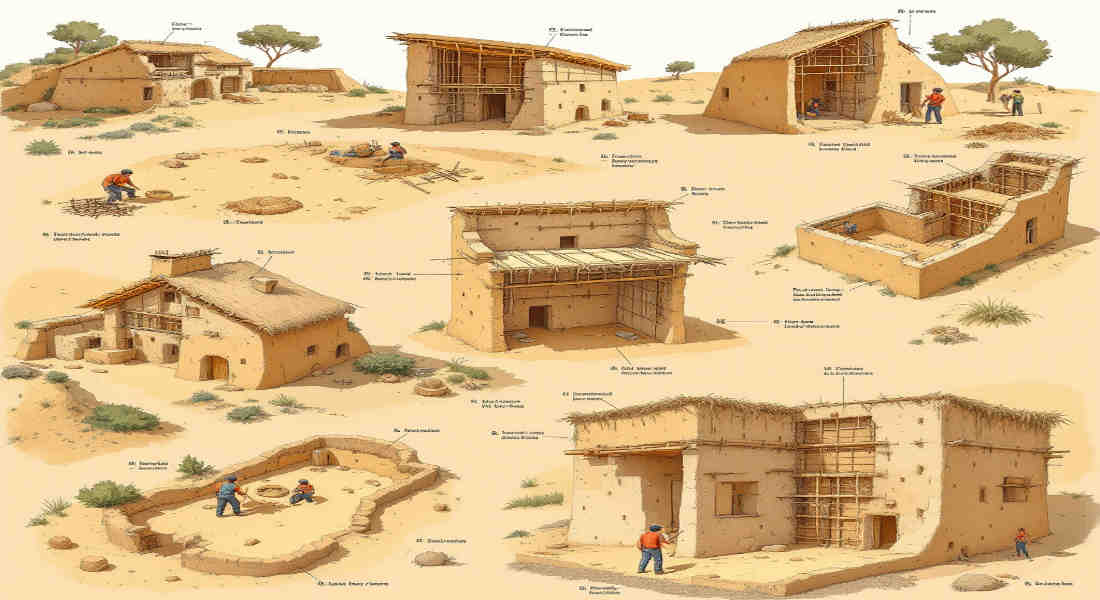Have you ever dreamed of building an eco-friendly and affordable home? If so, learning to make a cob house might be your perfect project. Cob houses are a product of ancient building methods that have stood the test of time. With walls made of natural materials like clay, sand, and straw, these homes are sustainable, gorgeous, and customizable.
In today’s world, where environmental consciousness is growing, cob houses have captured the imagination of DIY enthusiasts and sustainable builders alike. They offer a unique combination of affordability, energy efficiency, and artistic freedom. From their earthy aesthetic to their durable structure, cob houses return to simpler, more sustainable living.
What is a Cob House?
Definition and History
A cob house uses an earthen mixture of clay, sand, straw, and water. The term “cob” comes from an Old English word meaning “lump,” referring to how the material is shaped and applied in lumps or loaves. This building technique dates back thousands of years and has been used in regions as diverse as Europe, Africa, and the Middle East.
Cob construction is an ancient art, but it’s far from outdated. Many cob houses built centuries ago are still standing today, proving the longevity and durability of this method.
Key Components of Cob
The main ingredients of cob are:
- Clay: Acts as the binding agent for the mixture.
- Sand: Adds strength and prevents cracking.
- Straw: Provides tensile strength and prevents the structure from crumbling.
- Water: Helps combine the materials and makes the mixture workable.
This combination creates a strong, sustainable, and highly malleable material.
Unique Features of Cob Houses
Cob houses are characterized by their thick walls, which provide excellent insulation and temperature regulation. They often have organic, flowing shapes, and their surfaces can be sculpted into artistic designs. Windows and doorways in cob houses are typically rounded, adding to their charm.
Cob houses are gaining popularity today due to their sustainability, affordability, and versatility. As people seek greener alternatives to conventional housing, cob construction stands out as an innovative yet time-tested solution.
Benefits of Building a Cob House
Environmental Benefits
One of the most significant advantages of cob houses is their low carbon footprint. The materials are natural and often locally sourced, reducing the environmental impact of transportation. Additionally, cob walls are highly energy-efficient, keeping interiors warm in the winter and cool in the summer.
Durability and Longevity
Cob structures are incredibly durable. When built correctly, they can last for centuries. Their thick, monolithic walls resist weathering and can withstand harsh climates. Because cob is a non-combustible material, it also offers natural fire resistance.
Cost-Effectiveness
Compared to conventional housing, cob houses are significantly cheaper to build. Clay, sand, and straw are inexpensive and readily available. Furthermore, cob construction eliminates expensive machinery, making it accessible for DIY builders.
Flexibility in Design
Cob is one of the most versatile building materials. You can sculpt walls, create built-in furniture, and design unique shapes that reflect your personality. Unlike boxy modern homes, cob houses allow for creativity and customization.
You may also read (asbestos in your 1986 home).
Health Benefits
Cob walls are non-toxic and breathable, making them an excellent choice for people with allergies or sensitivities to synthetic materials. The natural insulation also helps regulate humidity, creating a comfortable and healthy living environment.
Preparing to Build Your Cob House
Site Selection and Preparation
The first step in building your cob house is choosing the correct location. Look for a site with good drainage and access to sunlight. Conduct a soil test to ensure the ground is suitable for cob construction.
Understanding Local Building Codes
Before starting your project, check your local building codes and regulations. Some areas may require permits for alternative construction methods.
Gathering Materials
You’ll need the following materials:
- Clay: Often found in the subsoil.
- Sand: Coarse, sharp sand is ideal.
- Straw: Wheat or barley straw works best.
- Water: Ensure a reliable water source is nearby.
Tools and Equipment Needed
The tools required are minimal and include:
- A shovel and a wheelbarrow
- A tarp (for mixing)
- Buckets and trowels
- Gloves and sturdy footwear
Safety Considerations
Cob construction is labor-intensive, so planning for breaks and staying hydrated is essential. If you’re working with a team, ensure everyone understands the process and follows safety guidelines.
You may also read (uncovering the mystery who built your home).

